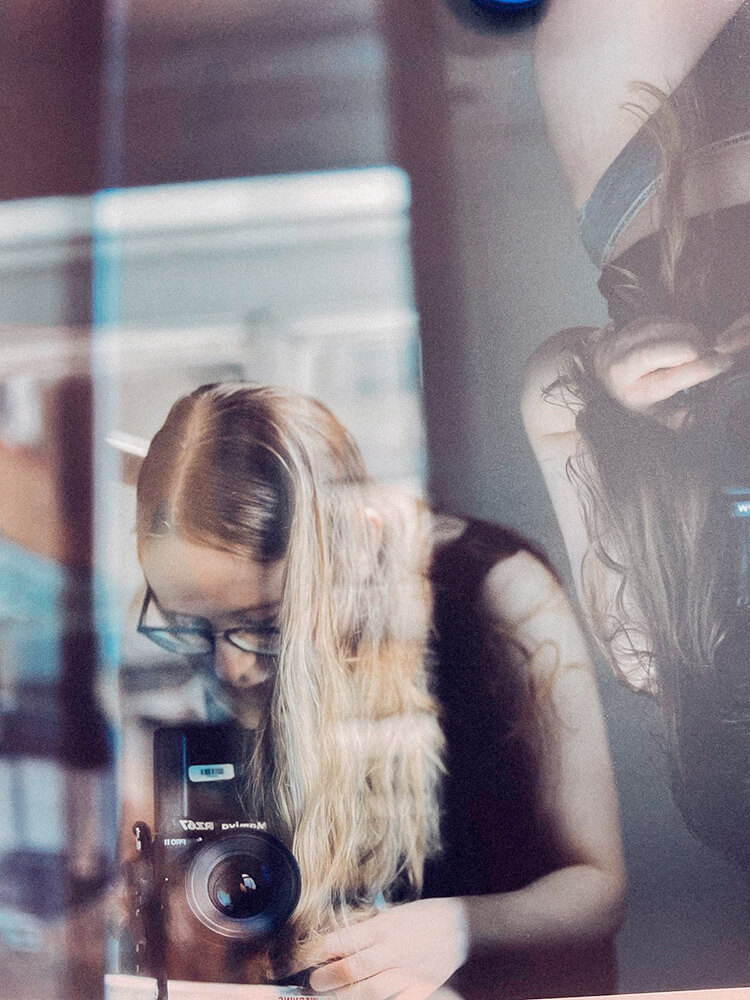Francesca Hummler is a German-American visual artist and researcher working with photography. She received her B.A. in Media Arts and B.S. in Biochemistry from the University of California at San Diego in 2019. She completed a Master's in Photography with distinction for her dissertation, "American Identity and Photographic Healing", from The Royal College of Art in London, England, in 2022. Interested in issues regarding identity, she draws from her experience as the daughter of German immigrants in the United States to explore the archive, familial intimacy, and generational trauma. Influenced by the concept of photo-therapy Francesca often utilizes self-portraiture to untangle her sense of self.
In 2021 she was selected as one of the laureates of the Carte Blanche Étudiants award and displayed her work at Paris Photo. In 2022 she won the Young Talent Award from the Vonovia Award for Photography and had her work displayed in the Sprengel Museum. Her work was collected by the Odunpazarı Modern Museum in Türkiye, featured in the Hamburg-based magazine Photonews, and she was interviewed by Deutschlandfunk Kultur. In May 2023, she had her first solo in Erlangen, Germany, quickly followed by her second solo show in London as a part of the Deptford X Festival. Recently, her series “Das Kuckucksei” or “The Cuckoo's Egg” was published in the January 2024 issue of Artforum magazine.
